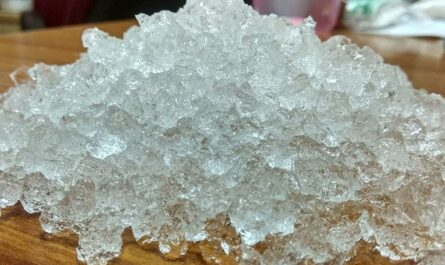Composition and Production
Ferro manganese is a ferroalloy consisting primarily of manganese and iron. In its typical commercial form, it contains between 65-90% manganese and 10-35% iron. Other elements like carbon, silicon, phosphorus may also be present in minor quantities.
It is produced by reducing a mixture of Ferro Manganese oxide ore and iron oxides in a blast furnace or electric arc furnace at around 1000-1500 degree Celsius. In the blast furnace process, the raw materials along with coke as the reducing agent are fed into the top of a blast furnace. Hot air is blown into the bottom of the furnace to support combustion of the coke. The intense heat results in chemical reactions that reduce the oxides to the metals. The molten metal collects at the bottom and is then tapped from the furnace. The electric arc furnace method uses graphite electrodes and an electric arc to achieve the high temperatures needed for the reduction process. The metal collected from either process typically contains 65-90% manganese.
Uses
Given its composition of manganese and iron, it finds wide application as a alloying agent in steelmaking and cast iron production. Some key uses include:
– Steelmaking: Manganese is a key alloying element in many steel grades as it imparts important properties like hardness, strength and wear resistance.It is added in the steelmaking furnace to achieve the required manganese content in the final steel products.
– Desulfurization: Manganese has strong affinity for sulfur and can effectively remove sulfur from steel melts. It promotes the desulfurization process during steel refining.
– Cast Iron: Manganese is also an important alloying constituent in cast iron which enhances its hardness and resistance to abrasion. Its dosing provides the required manganese during cast iron production.
– Battery Electrodes: Manganese dioxide is critical for cathode materials in alkaline batteries. Ferro manganese forms an important raw material for producing electrolytic manganese dioxide.
– Welding Rods: Some welding rods may contain manganese powder as an alloying element. Ferro manganese can be a source of manganese for such applications.
Physical and Chemical Properties
It has physical and chemical properties derived from its manganese and iron contents:
– It is a hard, grayish-black coarse granular solid at room temperature.
– Density ranges from 6-7 g/cm3 depending on alloy composition.
– Melting point is around 1130-1260 degree C for typical grades.
– Chemically reactive – reacts with oxygen, water and acids to release hydrogen. May ignite on contact with water.
– Non-toxic but manganese oxide dust from machining can present inhalation hazards if exposure limits are exceeded.
– Paramagnetic properties – it is attracted to magnetic fields stronger than ferrous alloys.
Grading and Specifications
There are no rigid international grading standards for it though some specifications are fixed by major producer and consumer countries. Grades are typically defined based on manganese and carbon contents:
– High Carbon Ferro Manganese (HC FeMn): 80-88% Mn, 4-6% C
– Medium Carbon Ferro Manganese (MC FeMn): 65-80% Mn, 1.5-4% C
– Low Carbon Ferro Manganese (LC FeMn): 65-80% Mn, <1.5% C
Additional designations may reflect silicon (1-2%) or phosphorus (<1%) levels. European, American and Japanese specifications exist for establishing impurity limits of elements like sulfur, phosphorus for particular end-use applications.
The global ferro manganese production was estimated at over 5 million tonnes in 2020 with China accounting for over 50% share. Key consumers included China, European Union, Japan and United States.
Its use is inextricably tied to the steel industry fortunes. Growth in infrastructure, manufacturing, machinery sectors drives demand from steel players. Expanding electric arc furnace steel capacity especially benefits medium/low carbon FeMn. Market is expected to grow moderately in tandem with projected global crude steel output rises in coming years.
*Note:
1. Source: Coherent Market Insights, Public sources, Desk research
2. We have leveraged AI tools to mine information and compile it.
About Author - Money Singh
Money Singh is a seasoned content writer with over four years of experience in the market research sector. Her expertise spans various industries, including food and beverages, biotechnology, chemical and materials, defense and aerospace, consumer goods, etc. LinkedIn Profile




